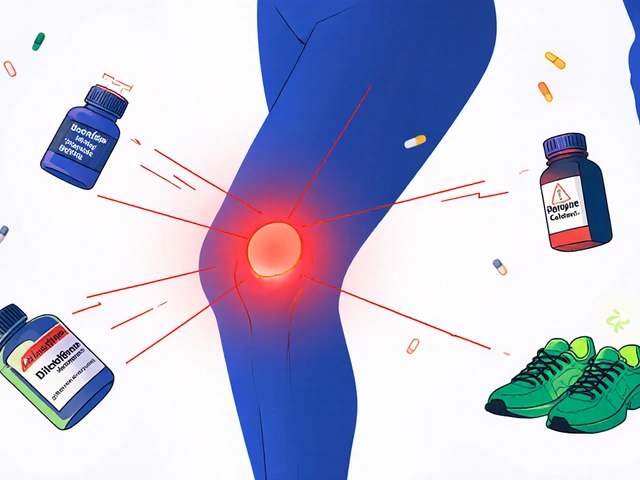Tamoxifen Safety: Practical Tips and What to Watch For
If you’re on tamoxifen for breast cancer or have been prescribed it for another reason, you probably have a lot of questions about safety. This guide breaks down the most common concerns, from everyday side effects to rare but serious risks, and gives you clear steps to stay on top of your health.
Typical side effects and how to handle them
Most people notice a few mild issues in the first few weeks. Hot flashes, night sweats, and a slight mood swing are the usual suspects. Over‑the‑counter options like caffeine‑free tea, lightweight pajamas, and a short walk can help cool you down. If you get nausea, try eating small, bland meals and keep a ginger candy handy.
Something a lot of users forget is that tamoxifen can cause vaginal dryness or discharge. A simple water‑based lubricant works well, and talking openly with your doctor about a vaginal estrogen ring (if they approve) can make a big difference. Remember, these changes are common and usually improve after a few months.
Serious risks you shouldn’t ignore
While most side effects are manageable, tamoxifen does carry a small chance of more serious problems. Blood clots in the leg or lungs are rare but can be life‑threatening. Look out for swelling, pain, or sudden shortness of breath and call your doctor right away.
Another concern is a potential rise in endometrial cancer risk. If you notice abnormal uterine bleeding, especially after menopause, schedule a check‑up. Your doctor may suggest a brief ultrasound to rule out anything serious.
Bone health can also be affected. Tamoxifen may thin your bones over time, so getting a calcium‑rich diet, vitamin D supplements, and weight‑bearing exercise (like brisk walking or light weights) can keep your skeleton strong. Ask your doctor about a bone density scan every couple of years.
Finally, keep an eye on liver function. Rarely, tamoxifen can irritate the liver, showing up as yellow‑tinted skin or dark urine. Routine blood tests every three to six months will catch any issues early.
Staying safe on tamoxifen is mostly about being aware and communicating regularly with your healthcare team. Keep a simple log of any new symptoms, note when they start, and share that list at each appointment. This proactive approach helps your doctor adjust the dose or suggest supportive meds before a problem gets bigger.
Bottom line: tamoxifen is a proven drug that saves lives, but like any medication, it works best when you know what to expect and act quickly on warning signs. Follow the tips above, stay consistent with your check‑ups, and you’ll maximize the benefits while minimizing the risks.
Buy Cheap Generic Tamoxifen Online: Safe Guide & Price Comparison
Learn how to safely buy cheap generic tamoxifen online, compare prices, spot legit pharmacies, and avoid common pitfalls in a clear step‑by‑step guide.
View More




